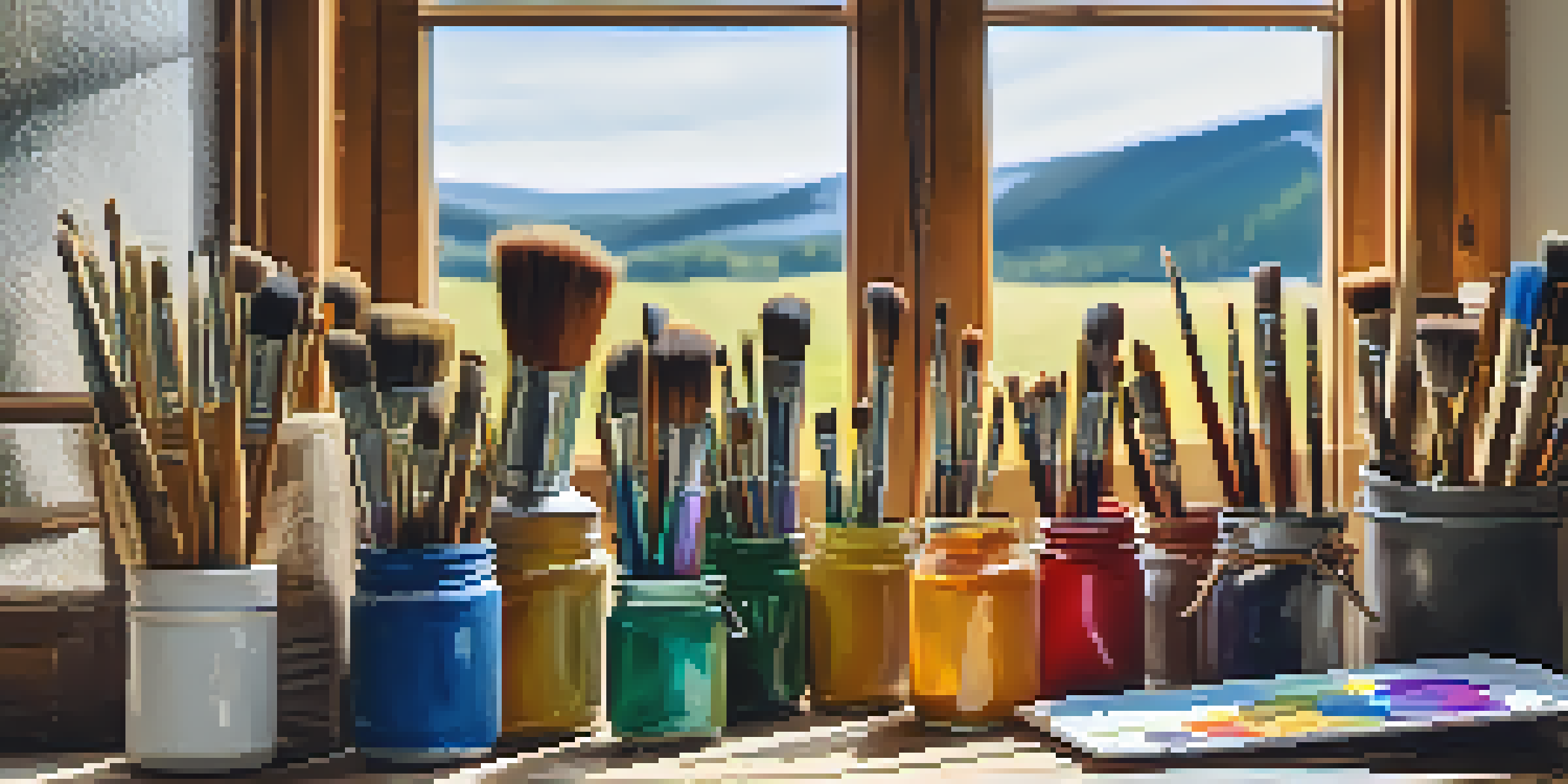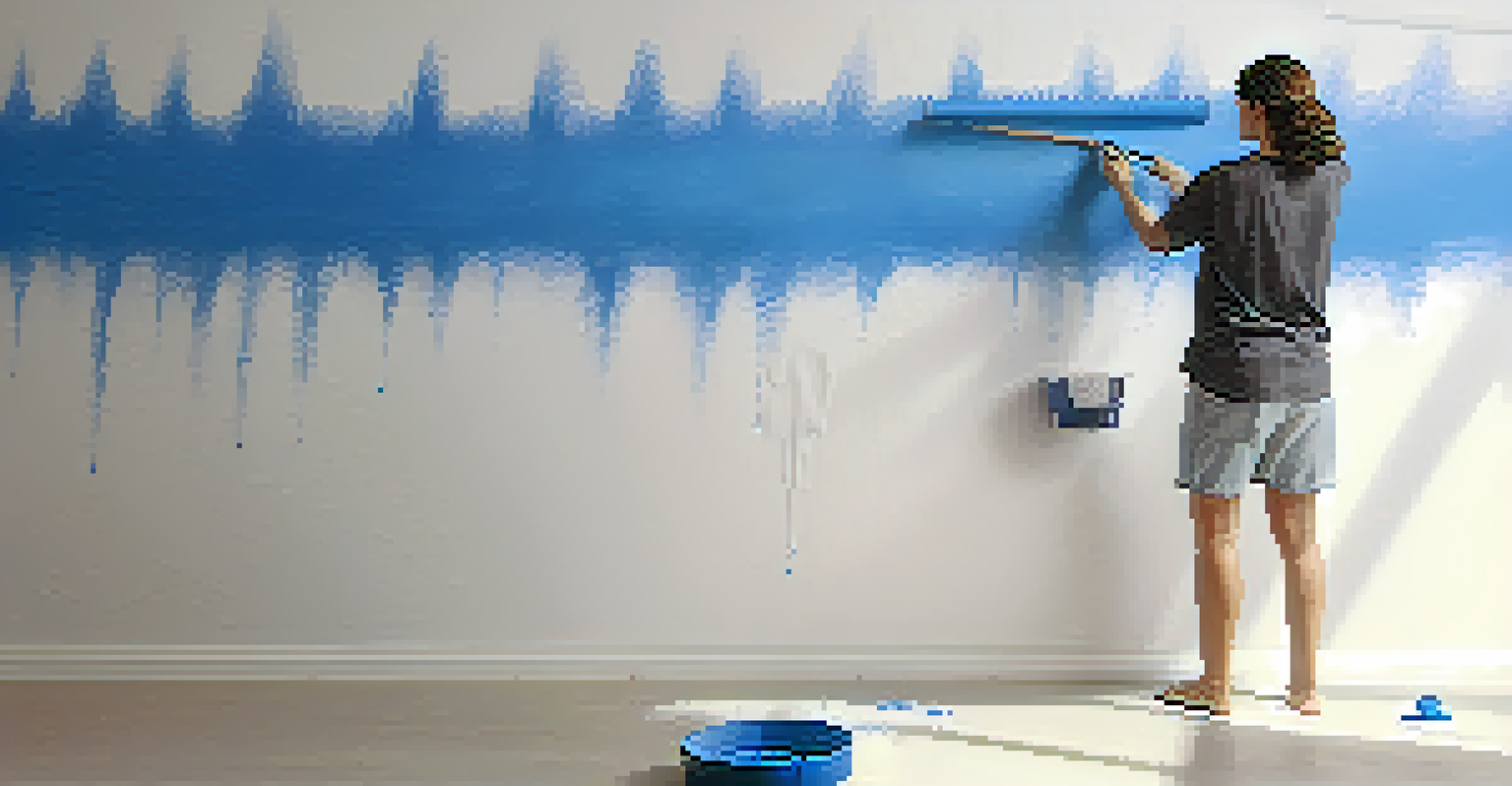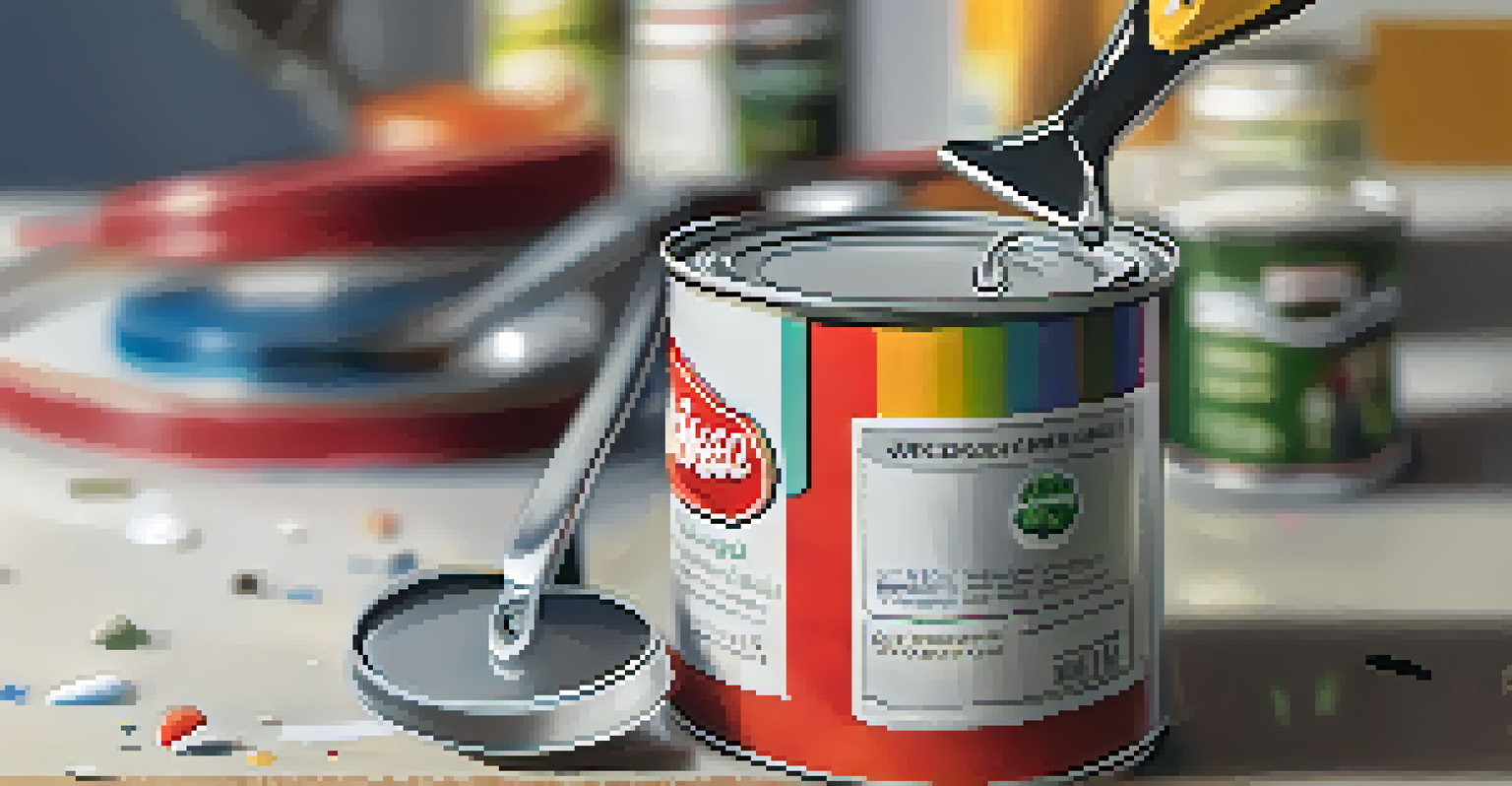Essential Tools You Need for DIY Painting Projects at Home

The Importance of Quality Paintbrushes in Your Toolkit
When embarking on a DIY painting project, having the right paintbrushes can make all the difference. Quality brushes ensure smooth, even application, which is especially important for achieving a professional finish. Opt for synthetic brushes for water-based paints and natural bristle brushes for oil-based paints to get the best results.
The bitterness of poor quality remains long after the sweetness of low price is forgotten.
Investing in a variety of sizes is also key. Smaller brushes are perfect for detailed work around edges and corners, while larger ones cover broad surfaces quickly. This variety not only makes your job easier but also enhances the overall look of your finished project.
Remember to clean your brushes thoroughly after each use to maintain their shape and longevity. A well-cared-for brush can last for years, saving you money in the long run and ensuring your projects consistently look top-notch.
Rollers for Fast Coverage on Large Surfaces
For those larger areas, paint rollers are your best friend. They cover walls and ceilings quickly, making them ideal for big DIY projects. When choosing a roller, consider the nap length: a shorter nap is great for smooth surfaces, while a longer nap is better for textured walls.

Using a roller can significantly reduce the time spent painting, allowing you to complete your project faster. Plus, they often produce fewer brush strokes, leading to a more uniform finish. Just remember to apply the paint in a W or M pattern for even distribution.
Quality Tools Enhance Results
Investing in quality paintbrushes and rollers ensures a professional finish and saves time during your DIY painting projects.
Don’t forget to have a roller tray on hand for easy loading and to prevent any mess. A good-quality roller cover can also enhance your painting experience, so choose wisely to ensure an efficient and enjoyable project.
Painter's Tape for Clean Lines and Edges
Painter's tape is essential for achieving crisp, clean lines on your walls. It helps to prevent paint from bleeding into areas you want to keep untouched, such as trims and ceilings. Just make sure to press it down firmly to avoid any sneaky leaks!
Good design is as little design as possible.
Before applying the tape, ensure the surface is clean and dry. This helps the tape adhere better, resulting in a sharper finish. Once your paint is dry, remove the tape at a 45-degree angle to reveal those beautiful lines.
Using painter's tape might add a bit of time to your prep work, but the payoff is worth it. It gives your project a polished look that can make your DIY efforts appear professional.
Drop Cloths: Protecting Your Space During Painting
When it comes to a DIY painting project, protecting your floors and furniture is crucial. Drop cloths act as a shield against spills and splatters, ensuring your space remains tidy. You can choose from canvas, plastic, or even old sheets, depending on your budget and needs.
Canvas drop cloths are durable and absorbent, making them great for larger areas. Plastic, on the other hand, is waterproof and can be easier to clean if spills occur. Regardless of your choice, laying down drop cloths will save you time and stress in the cleanup process.
Preparation is Key for Success
Thoroughly preparing your workspace and materials, including using painter's tape and mixing paint properly, leads to a smoother painting experience.
Don’t forget to secure your drop cloths with tape if they tend to slide around. This ensures they stay in place, providing the best protection for your home while you unleash your creativity.
A Quality Paint Tray for Easy Application
A paint tray is an often-overlooked yet essential tool for any DIY painter. It allows you to easily load your roller with paint, making the application process more efficient. Choosing a tray with a built-in ramp can help to minimize waste and make it easier to manage your paint.
Some trays come with liners that can be replaced after each use, saving you time on cleanup. This is especially useful if you're using different colors for your project. Just swap the liner and you’re good to go!
Having a sturdy, reliable paint tray can make your painting experience much smoother. It’s a small investment that makes a big difference in how easily you can tackle your DIY painting project.
Ladders for Safe Access to High Areas
When painting walls and ceilings, a sturdy ladder is an absolute must-have. It provides safe access to those hard-to-reach areas, allowing you to paint without straining your back. Choose a ladder that fits your height and is rated for the weight it needs to support.
A step stool is great for lower ceilings or small touch-ups, while an extension ladder works well for taller walls. Always ensure that your ladder is on stable ground, and consider having a friend hold it while you work for added safety.
Safety Gear is Essential
Wearing appropriate safety gear protects you from fumes and paint splashes, ensuring a safe and enjoyable DIY painting experience.
Investing in a good ladder not only enhances your safety but also boosts your confidence while painting. You'll find that getting the job done is much easier when you can reach every nook and cranny without worry.
Paint Can Opener and Stirring Tools for Smooth Mixing
Before you dive into your painting project, you need to prepare your paint. A good paint can opener is essential for easily breaking the seal without damaging the can. Once opened, it’s time to mix the paint for a consistent color, which is where a stirring stick comes in handy.
Mixing your paint thoroughly ensures that any pigments are evenly distributed, which is crucial for achieving the desired shade. A simple wooden stick or a paint mixing tool can do the trick, so make sure you have one handy.

Skipping this step might seem tempting when you’re eager to start painting, but don’t underestimate its importance. Proper preparation leads to better results, making it an essential part of your DIY painting toolkit.
Safety Gear: Protecting Yourself While You Paint
Safety should always come first during any DIY project, especially when painting. Wearing a mask can protect you from inhaling fumes and dust, while safety goggles shield your eyes from splashes. These simple precautions can make a big difference in ensuring a safe and enjoyable experience.
Additionally, consider wearing gloves to protect your hands from paint and chemicals. This is especially important if you’re using oil-based paints, which can be harsher on your skin. Choosing the right safety gear can help you focus on the fun of painting without worrying about potential hazards.
Taking a few moments to gear up can save you from discomfort and health issues down the line. So, don’t skip this step—your future self will thank you for it!